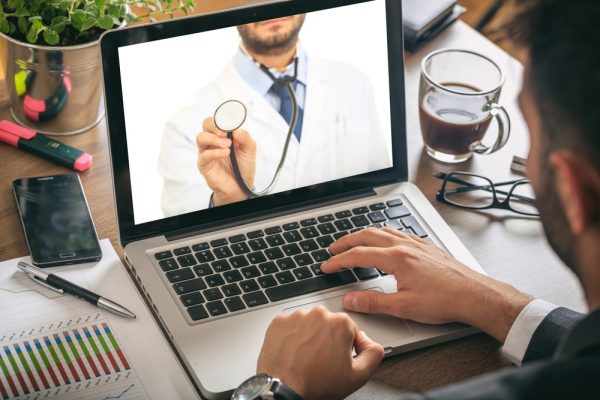How telemedicine technology can help cut the threat of coronavirus [Q&A]

As nations around the world gear up to deal with the coronavirus, what role can technology play in preventing the spread of this and other infectious diseases?
We spoke to Dr Jonathan Wiesen, founder and chief medical officer of telemedicine company MediOrbis to find out.
BN: How important is telemedicine as a first line of defense?
JW: Telemedicine is poised to prove its worth and utility in the global outbreak of the COVID19 virus. Telemedicine is perfectly positioned to serve as the first line of defense and a crucial tool in the medical fight in this pandemic.
There are a number of important roles that telemedicine physicians can play. First and foremost, physicians must counsel patients who may need to travel to the region on the risks that such an endeavor would entail. Patients must be made aware as to the scientific realities on the ground. Additionally, those who were in the regions in question, or who were potentially exposed, must be instructed on the proper means -- barrier, antiseptic, quarantine, etc. -- to prevent exposing others. Specifically:
- Washing one's hands regularly with soap and water for at least 20 seconds
- Avoiding unnecessary social contact such as hand shaking and hugging
- Avoiding touching one's nose, mouth or face; and washing one's hands (or disinfecting) after such contact occurs
- Staying home if one feels ill, particularly with a fever, cough or runny nose
- Seeking medical attention if one is short of breath, has difficulty breathing, has high spiking fevers or symptoms that continue without improvement.
Moreover, patients with possible exposure who are experiencing symptoms must be coached to seek medical attention immediately, alert those who they may have inadvertently spread the illness to and direct their medical teams to rule out the novel virus via specific diagnostic evaluation.
Lastly, telemedicine may prove to be a useful area of health information regarding the spread of the infection, identifying new areas of infection and serving as a helpful means of containment. What better clinical service to coordinate and quarantine a disease then a national centralized physician network whose expertise is remote communications and cloud-based software reporting?
Patients and providers who have any questions at all are recommended to contact their local health department for further information and guidance.
It is our sincere hope that current measures help stem the tide of infection spread and prevent worldwide viral dissemination. Telemedicine stands to play a crucial role both in the continued management and isolation of the virus, as well as in coordinating care should it emerge in small pockets in other international domains.
BN: Is it useful in limiting exposure to the virus, including for medical staff?
JW: Absolutely. Being able to take care of patients remotely can greatly reduce the risk of infection transmission. Particularly with vectors such as this one that are easily transferred between people, the greatest fear is that ill people, in seeking medical care, will transmit the virus to others who cross their paths. Healthcare workers in particular are at increased risk. In fact there is extremely high mortality among the original healthcare workers on the scene in China, and the medical community was saddened to hear of the passing of one of the physicians who discovered the novel strain of the virus.
I have worked with physicians who were at the front lines during the Legionella outbreak in the early 80s, and HIV in the early days. They were petrified, scared for their lives, worried that in helping others they were putting themselves at high risk.
All of these concerns can be mitigated through Telemedicine.
BN: Can it be a sole means of treating some cases?
JW: Telemedicine should never be utilized alone when caring for very sick patients. Hence, patients with difficulty breathing, high spiking fevers or other serious signs and symptoms should seek medical assistance, though it is best to call the medical practice before doing so, so as to mitigate the risk of transmission to others.
In non–severe cases telemedicine can certainly be utilized to care for patients. Without the need for high level acuity or procedures, physicians can take a detailed clinical and exposure history and counsel their patients effectively via telehealth.
BN: Can it help make better use of time by allowing health providers to 'see' more patients?
JW: Telemedicine has been demonstrated to be time and cost effective. Physicians can see patients more quickly and more efficiently, and can even take telehealth consults in between patients in their clinic or urgent care. Since physicians can perform telemedicine wherever they are located, and are not required to be physically in a clinic, the pool of physicians available is expanded as well. Doctors on vacation, in between shifts, awaiting credentialing, etc can all take telemedicine consultations. So it is not only allowing physicians to be more efficient, but also increasing physician availability.
BN: Is telemedicine useful for patients who may already be in hospital or in isolation?
JW: Absolutely. Many patients currently in quarantine are being cared for exclusively through telemedicine. As we've seen above it can minimize transmission of the viral infection.
Image credit: gioiak2/depositphotos.com
